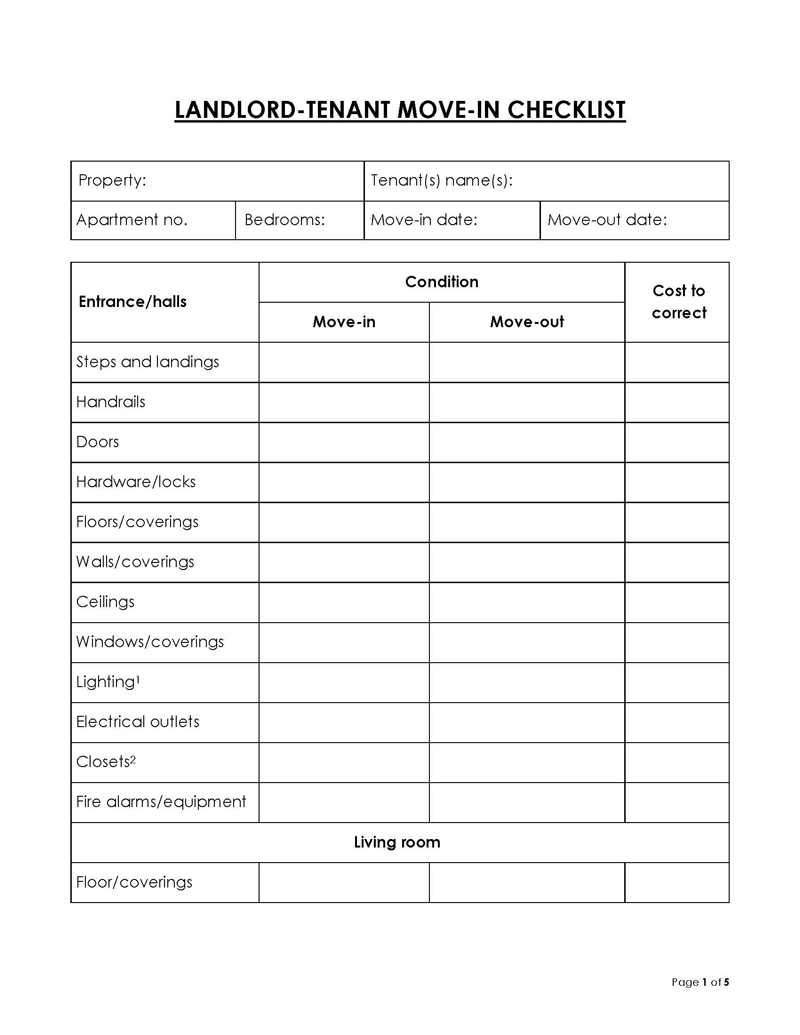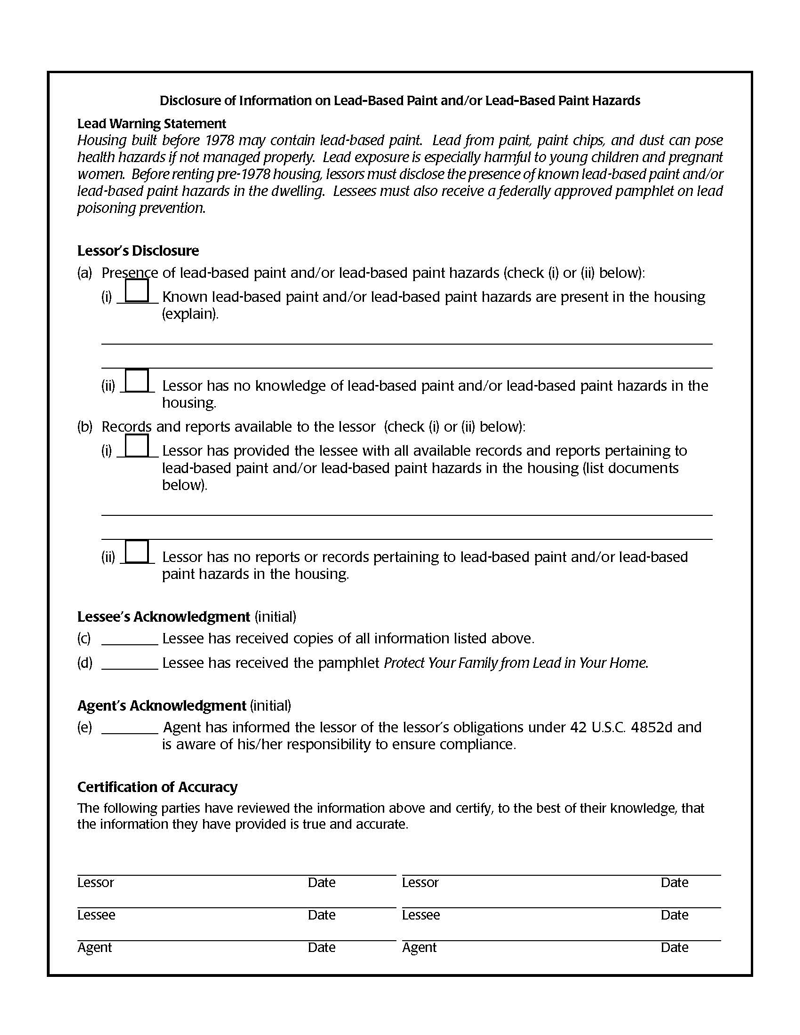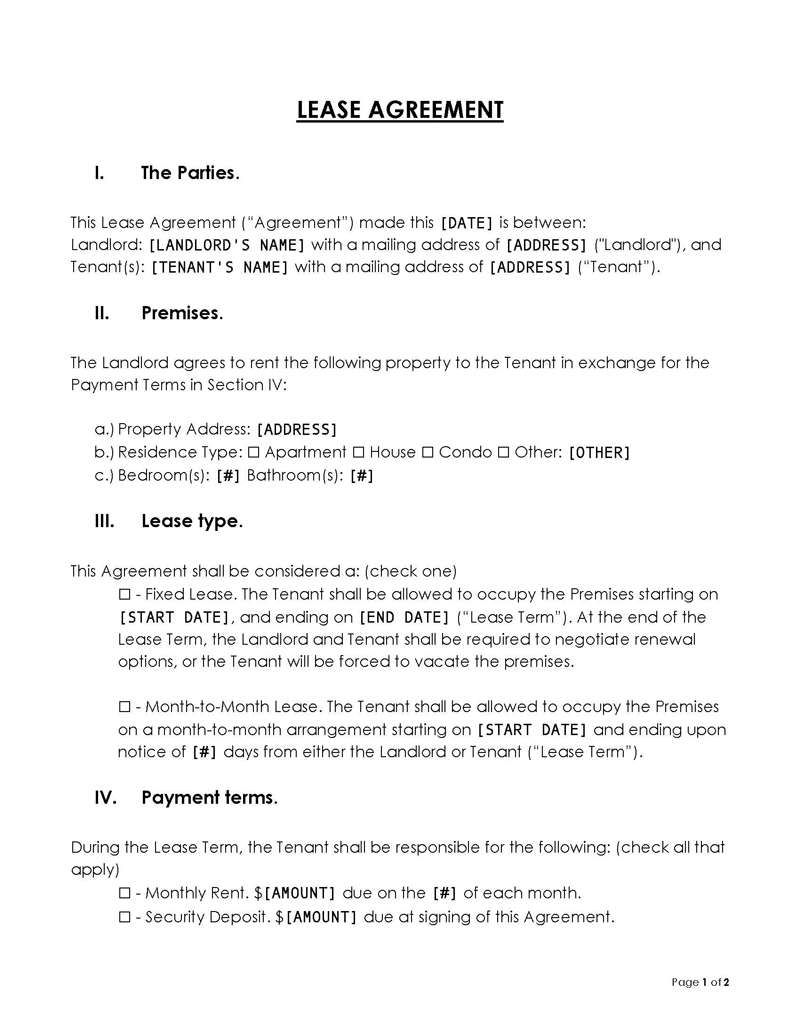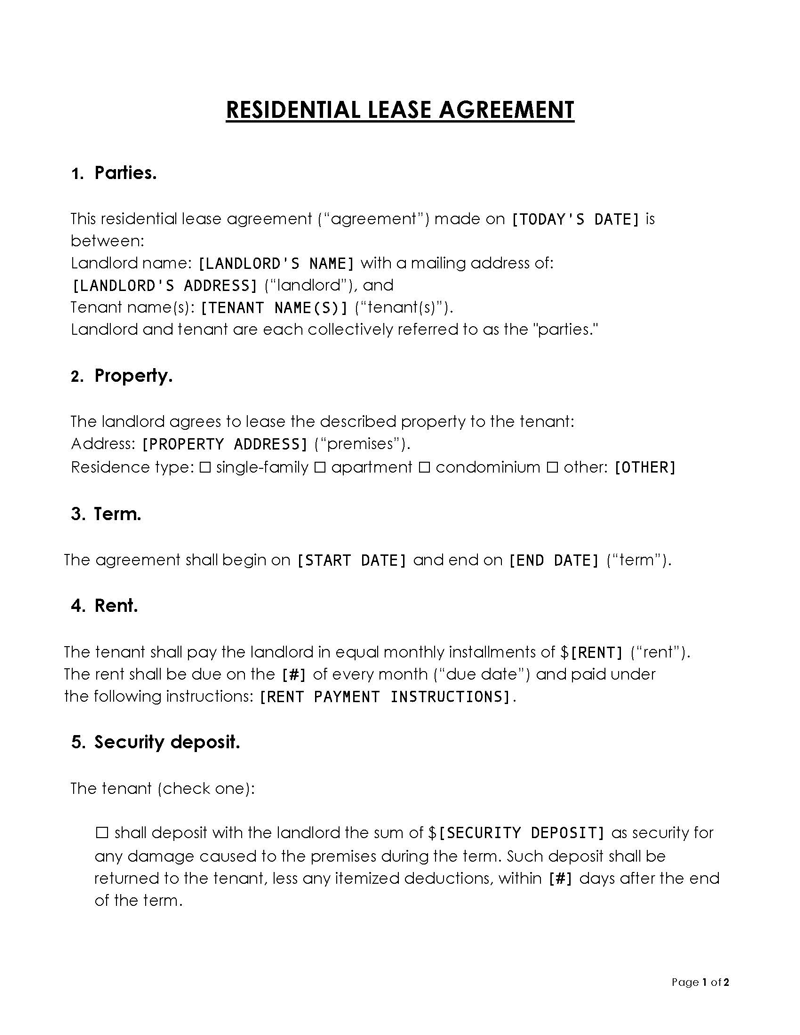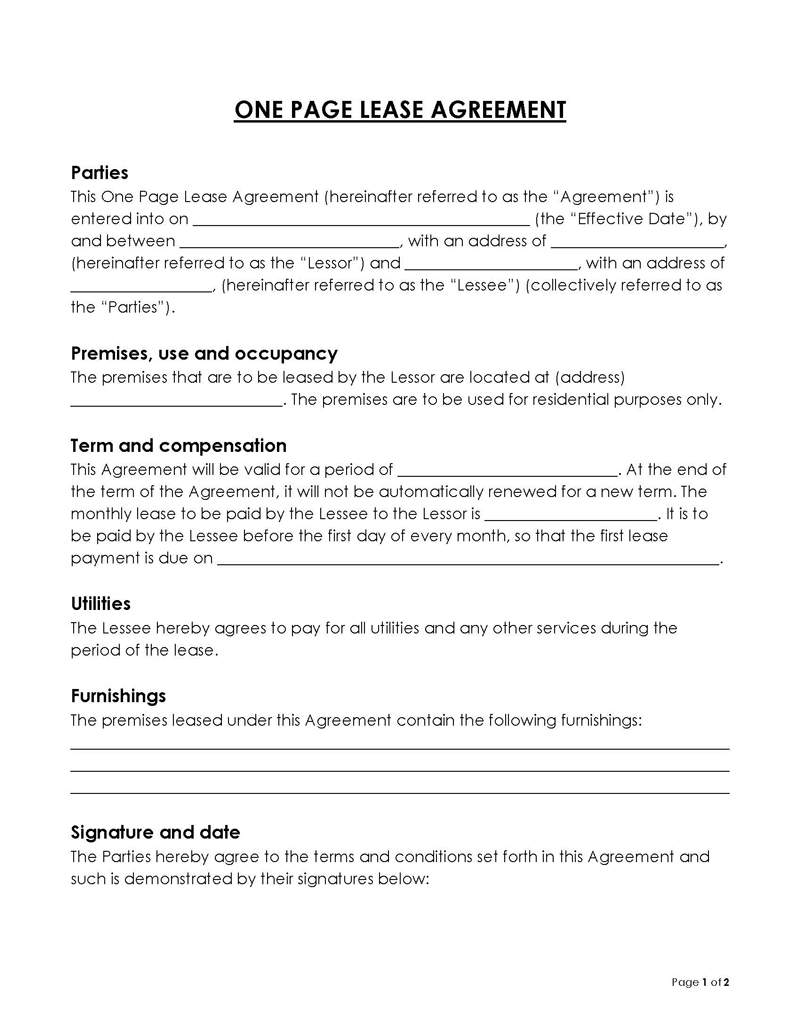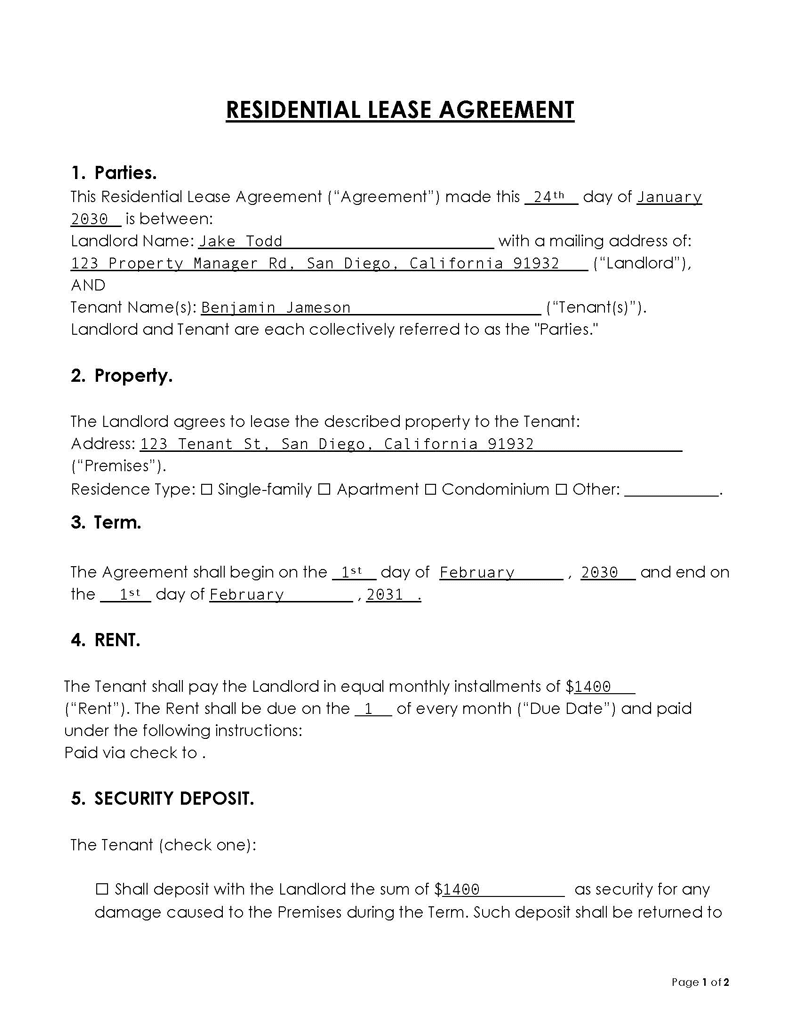A one-page lease agreement is a simple and easy way to create a legally binding document between a landlord and a tenant. This type of agreement typically contains all of the essential elements of a standard lease agreement but is condensed into a single page. A one-page lease agreement is helpful for those who want to avoid creating a lengthy, complicated document.
While a one-page lease agreement may be less detailed than a standard lease agreement, it is crucial to ensure that all necessary information is included. After the information has been collected, it can be entered into a standard lease agreement template. Once the document has been created, both parties should sign and date it.
A landlord and a tenant should keep a copy for their records. With a legally binding document in place, both landlord and tenant will have peace of mind knowing that their rights and responsibilities are clearly defined.
If you’re a landlord looking for a unique and straightforward lease agreement to issue to potential renters, the single-page lease agreement should suffice. One-page lease agreements offer various benefits, including simplified terms and conditions and eliminating the need to sign multiple pages, meaning you save paper usage and time.
In addition, this type of lease agreement also contains the bare minimum, omitting the many clauses often included in standard lease agreements that leaseholders don’t necessarily need. As a result, potential tenants are spared the hassle of flipping through pages to find essential clauses and can easily understand their tenancy rights and obligations.
This article explains everything you need to know about a one-page lease agreement, including the definition, the difference between a simple and a standard lease, and how to write a one-page lease agreement. There are also one-page lease agreement templates for your reference.
One-Page Lease Agreement Template
A one-page lease agreement template is a document with various formats and designs that you can use to create a new document. The primary purpose of a template is to make your job easier and reduce any chance of errors in formatting or content. Templates are precious if you want format consistency across multiple documents. Using a one-page lease agreement template is much easier than creating one from scratch.
This article has free, downloadable, and customizable one-page lease agreement templates that you can use for convenience:
What is One-Page Lease Agreement?
A one-page lease agreement is a contract between a landlord and tenant that outlines the terms of the rental agreement.
A one-page lease agreement can be used for any residential property, including apartments, houses, condos, vacation rentals, or business leases. The agreement should include all pertinent information about the property, such as the address, square footage, monthly rent price, and any rules or restrictions. Additionally, a one-page lease agreement should include the length of the lease and other essential details about the tenancy.
A one-page lease agreement is much easier to read and understand than a multi-page agreement. This is because it includes only the most critical information, written on a single page, making it simpler to digest. A one-page lease agreement is also less likely to have any errors or omissions since there is less information to include.
Another benefit of using a one-page lease agreement is that it can help save time and money. This is because you will not have to spend as much time drafting and printing it. You also don’t need to hire an attorney to draft it for you because it is pretty easy to prepare.
Additionally, you will not have to waste money on postage or courier fees if you choose to send the agreement electronically. A one-page lease agreement is becoming increasingly popular because it is much easier to understand than traditional leases. Many landlords and tenants prefer one-page leases because they eliminate a lot of the confusion that can come with longer leases.
Situations to Use One-Page Lease Agreement
A lease agreement serves as written proof that you own the land or building, even though you’re letting someone else use it for a while. There are situations where you might need a lease agreement.
They are:
- Residential lease agreement: This kind of lease is used when you specifically lease out an apartment or unit to a tenant at a fee. You also need this agreement if you plan to rent out small dwelling units, such as studios, one-bedroom, and two-bedroom apartments.
- Commercial lease agreement: This is the agreement when you will need to rent office spaces, shops, and other commercial properties. This type of contract also helps to specify what terms and conditions a tenant should abide by during their stay on the property.
- Sublease agreement: This is an agreement where the tenant will rent out the property for a certain period, usually when they are not using it. The landlord’s consent is essential to ensure that the rental lease will be effective and binding.
Disclosures
If you’re a landlord, you know that disclosures are a vital part of any lease agreement. They help protect you and your tenants by ensuring everyone is on the same page about things like lead paint, mold, and other potential hazards, as discussed below.
- Lead-based paint disclosure: You must sign this form if your property was constructed before 1978 because there’s a good chance it contains lead-based paint. You’ll need to disclose this to your tenants so they know the potential hazard and can pursue proper measures to protect themselves and their families.
- Move-in checklist: The move-in checklist allows landlords and tenants to authorize damage at the beginning and end of the rental term. On the start date, both parties should inspect each wall, appliance, and premises and note any existing repairs that are needed. After signing the contract, landlords and tenants will carefully inspect the premises again and point out the need for improvement. If the landlord discovers damage to the rental property, this will be considered at the end of the rental period for the security deposit refund.
- Screening the tenant: A landlord must screen a potential tenant before signing a lease agreement. When screening, you will learn about the tenant’s rental history, employment history, and credit score. This information will help you determine if the tenant will likely pay rent on time and take care of your property. By screening, you can ensure that they will abide by the terms and conditions of the contract. Additionally, consider taking note of any additional information they share, including links to their rental and credit history.
Simple Vs. Standard Lease
There are two main types of leases: simple and standard. A simple lease is a one-page agreement between a landlord and a tenant. It will typically outline the basic terms of the tenancy, such as the length of the lease, the monthly rent amount, and any special rules or regulations.
A standard lease, on the other hand, is a more comprehensive document that goes into greater detail about the rights and responsibilities of both parties. It covers all aspects of the contract. For example, the form lists the terms for pets, cancellation, landlord’s representation, and many other options. While these are important for a secure contract, they are not required for a binding rental agreement.
The type of lease agreement needed depends on your circumstances. For example, a simple lease may be all you need if you rent a small space, like a studio apartment. But a standard lease may be a better choice when renting a larger property or wanting more control over what happens during the tenancy.
How to Write a One-Page Lease Agreement?
Writing a one-page lease agreement is easy when you know what to include in the document. This section explains the various components of a one-page lease agreement to make writing easy for you.
Date
The date is one of the most important details you should not forget to include in your contract. It is used to confirm when the lease agreement was reviewed and signed. The date serves as proof that your lease agreement is a binding contract.
The parties
The landlord/lessor’s personal information and the tenant’s (lessee’s) information should feature in the one-page lease agreement.
- The landlord’s name and address: Write down your full name and address. After that, include the property’s location, such as street name and number, zip code, or city. This will help tenants identify your property should they need to contact you.
- Tenant’s name and address: Identify the full name and address of your tenant. It’s also crucial that you include their contact information, including their cellphone number and email address. This ensures that both parties can communicate during their stay in the house or apartment.
Premises
You must specify the type of property you rent, such as a house, condominium, apartment unit, or loft. This can be used as insurance for both parties to know what they are signing up for. You can also give an idea of additional amenities available to tenants, such as spa or gym membership, pet care services, etc.
Lease type
You need to determine the type of lease before stating it on your lease agreement so that both parties can agree on the rent amount and other provisions you need to satisfy.
The types of leases here are:
- Fixed lease: This is a lease agreement whose duration is determined in advance. It can last from as short as a few weeks to as long as five years. The duration will depend on the length of time that you have agreed with the tenant. The term of this rental agreement should also be determined before entering into this agreement.
- Expected lease term: This is a lease where the exact amount of time the tenant should enjoy their residence on your premises is specified. If the lease is for a limited period, you should define the first calendar date that the tenant will occupy the property and the last date that the tenant can leave.
- Monthly lease: With monthly lease, your tenants will have to pay monthly rent. This will depend on their time on your property and their anticipated stay.
Payment terms
When renting your property to tenants, you need to make sure that there are payment terms. This will help you determine the amount your clients need to pay for the rental property once they move in.
These include:
- Monthly rent: You must state the rent amount your tenant should pay monthly. These monthly rentals depend on your property’s rental value and the duration you will allow them to stay there.
- Security deposit: You can decide on the rules and regulations that should be included in the security deposit. Some of these include returnable or non-returnable deposits, what happens if the landlord has kept the security deposit without cause, and when it is fully returned to the tenant. Indicate the amount of the security deposit the tenant has to pay.
- Last month’s rent: A standard precaution for some landlords is to require the last month’s rent for a tenant’s residence to be paid before signing the lease. Indicate these terms in the rental agreement.
- Other payment terms: Check the other checkbox in the one-page lease agreement if the tenant is required to make a payment not defined above to sign this rental agreement. You should also state the reason for the additional payment and the exact amount that constitutes each additional payment.
Utilities
You may be responsible for paying for some of the utilities on your property. However, your tenants will also have responsibilities; a good example is taking care of paying some utility bills such as electricity, water, and telephone connection bills. Indicate who will be paying for what on the agreement.
Additional terms and conditions
Include any additional provisions that are not included in your one-page lease agreement. For example, suppose there is not enough space for the additional provisions. In that case, space can be added directly to the section or a document containing these additional obligations with an appropriate name and date.
Acknowledgment
Once you’ve drafted your lease agreement, it’s essential to have it reviewed by a lawyer to make sure that it’s legally binding. Once it’s finalized, you and your tenant should sign and date the agreement. Make sure to keep a copy for your records. Both parties should provide their printed names. However, if the landlord is a business or company, a representative chosen by the company signs as the landlord on the company’s behalf.
Frequently Asked Questions
Do you need a lease agreement, or can you use email as proof instead?
An email can form the basis of a contract, but a signed lease agreement is legally binding and holds you and the tenant responsible for the agreements recorded. An email carries the risk of being negligent to each other, causing disputes, and potentially leading to loss of income and assets.
Can you create your lease agreement?
Yes, you can create your one-page lease agreement. This will take some time, but the valuable thing about creating a lease agreement is that you can modify it according to how you see fit. You can also use our templates to create your one-page lease agreement. However, you should consult a licensed real estate agent or attorney to ensure you haven’t forgotten any meaningful terms.
Can the lease agreement be broken or canceled?
Yes. However, you should include the terms and conditions for breaking or canceling the lease agreement. This can include certain situations when you can cancel the lease agreement and the time frame. One of the situations is if either party breaches its responsibilities under any provision of the agreement, and the other is if both parties agree to terminate the rental agreement before its expiration. For example, if you want to terminate the lease agreement, the tenant needs enough time to find a new apartment. Alternatively, if the tenant has abandoned the contract, you will need time to find a new tenant.
What’s the difference between a rent agreement and a lease agreement?
A rental agreement and a lease agreement are often used interchangeably, but these two documents differ slightly. The main difference between a lease and a rental agreement is the duration. Rental agreements are usually short-term (usually 30 days), while leases are long-term (usually 12 months), although 6 or 18-month contracts are also standard.
